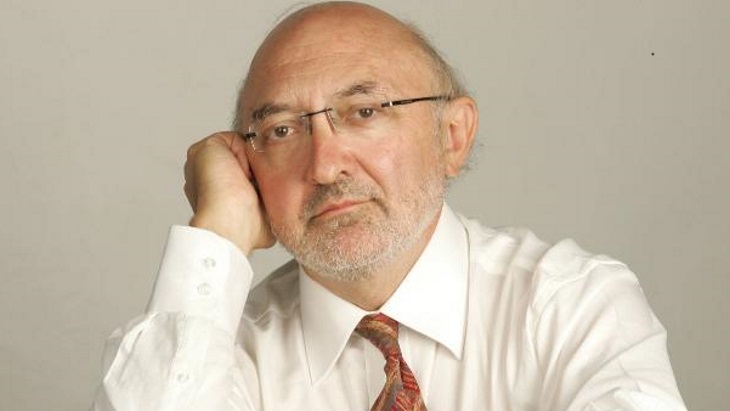The prime minister's thought bubble that a future could be crafted out of some hybrid mix of gas generation and so-called renewables is an embarrassingly inefficient and unworkable dead-end.
The idea that we could go all renewables - with assorted batteries from the Tesla version in South Australia to the Turnbull one in the Snowy included - is a fantasy; it would be the embracing of the third future: chaos.
In very simple terms, unless and until the laws of physics are repealed, if we want a power grid to deliver the cheap, reliable and plentiful electricity that has been the basis of our economy, our society and indeed our very civilisation, the base-load has to be carried by coal or nuclear.
I would have no problem continuing to have it based on coal, with the next generation of coal-fired generation far more efficient and much cleaner, in the real sense of not pumping out particulates, than our existing ageing and indeed dying pre-1980s fleet.
But you have to recognise reality. Before the bushfires that was an unlikely prospect. After the bushfires - however irrational the demonisation of our carbon dioxide emissions and our coal-fired stations - even a single coal-fired station has become impossible.
Indeed the PM who carried a lump of coal into parliament symbolically returned it to the ground in his speech midweek. Yes, to digging coal up to power the thousands of coal-fired stations in China and all the other countries; no, to powering another one in Australia.
What's wrong with the gas-renewables mix? Isn't it - actually, more a gas-gas mix - working in the US, to both cut CO2 emissions and deliver cheap electricity?
Well, yes, but that's also the answer to why it wouldn't work in Australia. That's the US, this is Australia. Another way of putting it, they have President Trump, we have PM Morrison.
We also have a near-uniform consensus across the truncated spectrum of state political leaders against the finding - far less the development - of gas. Did anyone mention fracking?
Simply, there are three things wrong with the idea that gas could replace coal in the energy mix.
We don't have enough, absent redirecting all exports to domestic use. We are not going to find enough anytime soon, if indeed we are even allowed to look for it.
Using gas to generate electricity is a hugely inefficient use of what should be a premium fuel; only slightly less inefficient than using petrol.
And that points to the third, in the context of the (hysterical) reason we want to kill coal: it’s still a CO2 emitting, if less than coal, fossil fuel.
Now, there are three arguments presented against nuclear, which is the only means of delivering non CO2-emitting reliable base-load power.
The first is the safety aspect - both the operation and disposal of waste. The first simply does not stand up, if you look through the hysteria at each of the three major accidents over the past half-century: Three Mile Island, Chernobyl and Fukushima.
It is the hysteria which has also created the other two objections: it takes too long to build a nuclear station and the capital cost - both over-engineering and time-value of money - makes the power too expensive.
According to the Asia Times last year, the average build-time for a nuclear reactor in China was five years. OK, this is Australia; if everything went right we could probably do it in 10. I doubt we could build a hospital in even two months, far less two weeks.
That is why we need to start now - we need at least three major stations to anchor the grid across the three eastern states, for starters, by 2030, as the coal stations continue to close with accelerating rapidity.
This can only happen with absolute bipartisan commitment from the two major parties. We also need it from the Green left.
The best, if faint, hope of “winning that”, is via bipartisan Labor-Coalition commitment not simply to nuclear, but that it is either three nuclear stations or three new coal stations.
If the left is serious about reducing our power-generated CO2 emissions, it can only happen by embracing nuclear.
And embracing it in a China-like way that allows the stations to be built in 10 years (I’d hang out for seven in my dreams), and not red-taped and green-taped or Nimby-ied away past 20 years and so into our third future of chaos.
A mix of base-load nuclear and peak-demand gas would be both efficiently viable and able to accommodate - in a fairly rational way - the vanity virtue-signalling generation by wind and solar.
Breaking the hoodoo against nuclear power might also help terminate what stands as the single most stupid decision ever by an Australian government - the purchase of the French nuclear submarines on the basis they are re-engineered back to an old (fossil fuel) technology.
Why didn't we buy the US F-35 fighters on the same basis? That they be re-engineered to go back to propjets? And for delivery in 2050?
Yes, Prime Minister, go for it. You could find it liberating. Try uttering the word nuclear.
And when you have uttered it a few times in connection with power generation; why, you will find it effortless to have it followed by the word submarines.
This article first appeared in The Australian on 1 February and has been re-published here with the author's permission.








_53514_33880.jpg)



